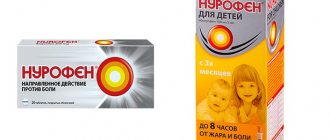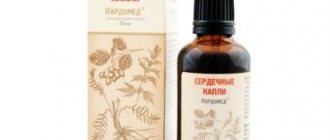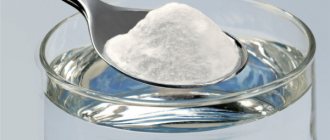Medical Internet conferences
In the structure of the incidence of malignant tumors, urological localizations account for 7.7%. Among them, more than 68% is cancer of the urinary organs. Bladder cancer is the second most common tumor in urological oncology practice. Its frequency reaches 5-8% of all malignant diseases. Bladder tumors occur 3-4 times more often in men than in women. In the European Union, the incidence of bladder cancer in 2000 was 23 cases, and the mortality rate was 10 cases per 100,000 population per year, with 70% of patients over 65 years of age. In 2003, 101,000 new cases were detected in the European Union, with 37,000 patients dying from bladder cancer.
Radical operations for urological cancer diseases are long and traumatic, accompanied by significant blood loss during the intraoperative period from 800 to 2000 ml or more. At the same time, transfusion of transfusion media often leads to a number of post-transfusion complications, both immediate (acute hemolysis, allergic reactions, non-cardiogenic pulmonary edema, bacterial shock) and long-term (hemolysis, post-transfusion purpura, hemosiderosis of organs, vector-borne infections).
Controlled hypotension was introduced into practice in 1948 by Griffits and Gillie. A decrease in pressure was achieved by introducing ganglion blockers, the first of which were hexonium and pentamine. Subsequently, such drugs as arfonade, hygronium, sodium nitroprusside, clonidine, and nitrates were introduced into practice. However, the need for controlled hypotension, the optimal level of pressure reduction and its duration, and pharmacological means to achieve it remain controversial issues. Despite the risk of complications described in the literature, such as cardiac arrest, thrombosis, renal dysfunction and others, their incidence is extremely low. With the rational use of the artificial hypotension technique, there are a number of significant positive aspects, one of which is the reduction of intraoperative blood loss and the need for blood products. The combination of general anesthesia with a long-term epidural block facilitates controlled hypotension and reduces the need for general anesthetics, which is important in elderly patients with severe concomitant pathology.
Ganglion blocking drugs
Home Medical Encyclopedia Medicines Drugs acting primarily on the peripheral nervous system
ARFONAD (Arfonad)
Synonyms: Trimetaphan camsilate.
Pharmachologic effect. Arfonad lowers blood pressure through ganglion blockade with peripheral vasodilation (dilation of the lumen of blood vessels). It has a fast, pronounced, but very short-term effect.
Indications for use. Artificial hypotension (artificially regulated reduction in blood pressure) in surgery, acute pulmonary edema in hypertensive patients with left ventricular failure, hypertensive crises (rapid and sharp rise in blood pressure).
Method of administration and dose. Surgical interventions in a state of hypotension (against the background of low blood pressure): arfonade is administered through intravenous drip infusion. The infusion of the drug begins with 60 drops of a 1% solution (approximately 3 mg) per minute after induction of anesthesia and fixation of the patient in the position required for the operation (surgical field at the top), 10 minutes before obtaining the desired reduction in pressure. The rate of infusion must be controlled to maintain hypotension at the required level.
Usually 10-30 drops (0.5-1.5 mg) per minute are sufficient. Blood pressure should be monitored every 3-5 minutes. Young and strong patients require higher doses, while older and sick patients with low blood pressure require lower doses.
In order to achieve a shorter effect of the drug or improve control, 0.5% or 2.5% infusion solutions can be used, with appropriate adjustment of the infusion rate.
Non-surgical indications (acute pulmonary edema or hypertensive crises): single intravenous doses of 0.1-0.2 mg/kg body weight.
Side effect. If the instructions for use of the drug are strictly followed (careful monitoring of blood pressure and slow infusion of the solution), side effects are relatively rare and are mainly caused by an excessive decrease in pressure.
Sometimes nausea, vomiting and a feeling of warmth occur. Tachycardia (rapid heartbeat), paralytic ileus, or atony (loss of tone) of the bladder are extremely rare and are a consequence of parasympathetic blockade.
Contraindications. Anemia (decrease in hemoglobin content in the blood), oligemia (decrease in the total amount of blood), shock, asphyxia (respiratory failure / suffocation /), pulmonary failure, progressive atherosclerosis, coronary heart disease, as well as acute kidney and liver diseases. Inability to compensate for blood loss. Pregnancy (danger to the fetus) and childbirth.
Release form. Ampoules: 250 mg of dry substance and ampoules with solvent (5 ml of water for injection).
Storage conditions. List B. In a cool place. Cannot be frozen.
BENZOHEXONIUM (Benzohexonium)
Synonyms: Hexonium B, Hexamethonium benzosulfonate.
Pharmachologic effect. Ganglion blocking agent.
Indications for use. Spasm (sharp narrowing of the lumen) of peripheral vessels, hypertension (persistent rise in blood pressure), hypertensive crises (rapid and sharp rise in blood pressure), bronchial asthma, peptic ulcer of the stomach and duodenum.
Method of administration and dose. Orally 0.1-0.2 g 2-3 times a day; subcutaneously and intramuscularly - 1-1.5 ml of a 2.5% solution. The highest single oral dose is 0.3 g, daily dose is 0.9 g; subcutaneously one-time - 0.075 g, daily - 0.3 g.
Side effect. General weakness, dizziness, palpitations. Large doses can cause orthostatic collapse (a sharp drop in blood pressure when moving from a horizontal to a vertical position), severe mydriasis (pupil dilation), dry mouth, and atony (loss of tone) of the bladder.
Contraindications. Hypotension (low blood pressure), severe parenchymal damage to the kidneys, liver, central nervous system, thrombophlebitis (inflammation of a vein with its blockage).
Release form. Tablets of 0.1 g and 0.25 g in a package of 20 pieces; ampoules of 1 ml of 2.5% solution in a package of 6 pieces.
Storage conditions. List B. In a dry place.
HYGRONIUM
Synonyms: Triperium iodide,
Pharmachologic effect. Short-acting ganglion blocking agent.
Indications for use. In anesthesiology for controlled hypotension (artificially regulated reduction in blood pressure).
Method of administration and dose. Intravenous (drip) 0.1% solution in isotonic sodium chloride solution. Start with 70-100 drops per minute. Maintenance dose 30-40 drops per minute.
Side effect. Severe hypotension (low blood pressure).
Contraindications. The same as for the harp.
Release form. Powder of 0.1 g in ampoules with a capacity of 10 ml in a package of 10 pieces.
Storage conditions. List B. In a place protected from light.
DIMEKOLIN (Dimecolinum)
Synonyms: Dimecoline iodide.
Pharmachologic effect. Ganglioblocker. Close in action to benzohexonium, but more active.
Indications for use. Used for peptic ulcers of the stomach and duodenum, spastic colitis, cholecystitis (inflammation of the gallbladder) and other diseases accompanied by spasms of smooth muscles, as well as spasms of peripheral vessels and only sometimes for hypertension (persistent rise in blood pressure).
Method of administration and dose. For peptic ulcers of the stomach and duodenum and spasms of peripheral vessels, 0.025-0.05 g is prescribed orally (in tablet form) 2-3 times a day (before meals). The course of treatment is 3-4 weeks.
For hypertension (stages II-III), it is prescribed orally, starting with 0.025 g per dose 1-2 times a day, then increase the dose to 0.05 g 2 times a day. The course of treatment is 3-5 weeks.
Side effects and contraindications are the same as when using benzohexonium.
Release form. Tablets of 0.025 g and 0.05 g (25 and 50 mg), film-coated.
Storage conditions. List B. In a place protected from light.
IMEKHIN (Imechinum)
Pharmachologic effect. It has a blocking effect on N-cholinoreactive systems and gives a pronounced but short-term hypotensive (lowering blood pressure) effect.
Indications for use. To obtain controlled arterial hypotension (artificially regulated reduction in blood pressure) during surgical interventions, to prevent and relieve (relieve) hypertensive crises (rapid and sharp rise in blood pressure), treatment of pulmonary and cerebral edema, for hypertension (persistent rise in blood pressure) on due to acute renal failure.
Method of administration and dose. Intravenously. Drip at a rate of 90-120 drops per minute in a dilution of 1: 10,000 (1 ml of 1% solution is diluted in 100 ml of isotonic sodium chloride solution or 5% glucose solution). After some time, it is recommended to reduce the rate of introduction of the solution to 30-50 drops per minute. If the hypotensive effect is insufficient, the concentration of the solution is increased to 1: 5,000. A single or fractional dose of 5-7-10 mg (0.5-0.7-1 ml of 1% solution) is administered slowly (2-3 mg with 3- at 4 minute intervals). In combination: first, 5-10 mg is administered in the form of a solution of 1: 10,000 or 1: 5,000 at a rate of 30-50 drops per minute.
Side effect. Orthostatic collapse (a sharp drop in blood pressure when moving from a horizontal to a vertical position), general weakness, dizziness, impaired accommodation (impaired visual perception), dry mouth.
Contraindications. Severe diseases of the heart, liver, thrombosis (impaired vascular patency), diseases of the coronary (heart) vessels, angle-closure glaucoma (increased intraocular pressure). It is not recommended to use the drug to obtain controlled hypotension in the elderly, as well as in cases of kidney damage with impaired function.
Release form. Ampoules of 1 and 2 ml of 1% solution in a package of 10 pieces.
Storage conditions. List B. In a place protected from light.
CAMPHONIUM (Camphonium)
Pharmachologic effect. Ganglioblocker. Reduces blood pressure, dilates peripheral blood vessels.
Indications for use. Obliterating endarteritis (inflammation of the inner lining of the arteries of the extremities with a decrease in their lumen), stage I-II hypertension (persistent increase in blood pressure), gastric ulcer.
Method of administration and dose. Take orally regardless of food intake. Doses of the drug must be strictly individual, set depending on the nature of the disease and amount to 0.01-0.1 g 1-2 times a day. Parenterally (bypassing the digestive tract) is administered starting with 0.5-1 ml of a 1% solution; if well tolerated, the single dose can be increased to 5 ml; injections are made 1-3 times a day.
For controlled hypotension (artificially regulated reduction in blood pressure), 0.25-0.5-1 ml of a 1% solution is injected into a vein for 1-11/2 minutes. For long-term operations, the injection can be repeated after 1-11/2 hours.
Side effect. General weakness, increased heart rate, dry mouth, dilated pupils, and constipation are possible. In these cases, you should stop taking the drug and consult a doctor.
Contraindications. Hypotension (low blood pressure), severe atherosclerosis, organic damage to the myocardium (heart muscle), thrombosis (impaired vascular patency), chronic coronary insufficiency (inconsistency between the delivery of oxygen from the blood and the heart's oxygen demand), glaucoma (increased intraocular pressure), myocardial infarction , cerebral hemorrhage.
Release form. Tablets of 0.01 g and 0.05 g in a package of 50 pieces, 1% solution in ampoules of 1 ml in a package of 10 pieces.
Storage conditions. List B. In a place protected from light.
QUATERON (Quateronum)
Pharmachologic effect. The drug blocks the conduction of excitation in the parasympathetic and, to a lesser extent, in the sympathetic ganglia. It also has some coronary dilation (expanding the blood vessels of the heart) effect.
Indications for use. It is used primarily for gastric and duodenal ulcers, sometimes for angina pectoris and hypertension (persistent increase in blood pressure).
Method of administration and dose. Prescribed orally in the form of tablets or an aqueous 0.6% solution.
For gastric ulcers, take 0.02-0.03 g (1-11/2 tablets or 5 ml of 0.6% solution) 3-4 times a day. The course of treatment is 3-4 weeks. and more.
For angina pectoris, to prevent attacks, it is prescribed starting from 0.01 g (10 mg) per dose, after 2-3 days the single dose is increased to 0.02 g. Take 3 times, and with frequent attacks 4 times a day. The course of treatment is 3-4 weeks. Treatment can be repeated after a 10-12 day break.
For hypertension, 0.02-0.03 g is prescribed 3-5 times a day; the course of treatment is on average 3 weeks.
Higher doses for adults orally: single dose - 0.05 g, daily dose - 0.2 g.
Side effect. Dizziness, tendency to constipation, moderate tachycardia (rapid heartbeat). In patients with gastric ulcers, sometimes in the first days there is increased pain in the epigastric region and dyspeptic symptoms (digestive disorders). Patients with angina pectoris sometimes experience discomfort in the heart area and attacks become more frequent; in these cases, the drug is discontinued for 2-6 days, then it is prescribed in smaller doses; if side effects do not stop, the drug is discontinued. Caution should be exercised when prescribing quaterone to patients with arterial hypotension (low blood pressure).
Contraindications. The same as for benzohexonium.
Release form. Powder and tablets of 0.02 g.
Storage conditions. List B. In a well-closed container, protected from light.
PACHYCARPINE HYDRIOIDID (Pachycarpini hydroiodidum)
Synonyms: Sperteine hydroiodide, Pachycarpine hydroiodide.
Pharmachologic effect. Ganglioblocker; increases tone and enhances contraction of the uterine muscles. One of the important features of pachycarpine is its ability to increase tone and enhance contraction of the uterine muscles. In this regard, pachycarpine was relatively widely used to enhance labor in case of weak labor contractions and early breaking of water, as well as in case of weak pushing. The drug, unlike pituitrin, does not cause an increase in blood pressure and can be prescribed to women in labor suffering from hypertension (persistent increase in blood pressure).
Indications for use. Spasms (sharp narrowing of the lumen) of peripheral vessels, gangliolitis (inflammation of nerve nodes), myopathy (muscle disease), to stimulate labor and in the postpartum period to reduce bleeding. Recently, it has been rarely used to induce labor.
Method of administration and dose. Prescribed orally (before meals), subcutaneously and intramuscularly. For obliterating endarteritis (inflammation of the inner lining of the arteries of the extremities with a decrease in their lumen), give 0.05-0.1 g orally 2-3 times a day. Treatment is carried out for 3-6 weeks. In 2-3 months. If the process worsens, the course of treatment can be repeated. For gangliolitis, 0.05-0.1 g is prescribed orally 2 times a day for 10-15 days. For myopathy, 0.1 g is prescribed orally 2 times a day for 40-50 days. The course of treatment is repeated 2-3 times every 1-2-3 months.
To stimulate labor, 2-4 ml of a 3% solution is administered subcutaneously or intramuscularly.
Higher doses for adults: single dose orally - 0.2 g, daily dose - 0.6 g; under the skin one-time - 0.15 g, daily - 0.45 g.
Side effect. The same as when using benzohexonium. In case of overdose, it can cause toxic effects, including severe poisoning.
Contraindications. Hypotension (low blood pressure), severe atherosclerosis, angina pectoris, liver and kidney diseases, pregnancy.
Release form. Tablets of 0.1 g in a package of 10 pieces; 3% solution in ampoules of 2 ml.
Storage conditions. List B. In a dry place, protected from light.
PENTAMIN (Pentaminum)
Synonyms: Azamethonium bromide, Pendiomid, Pentamethazene, etc.
Pharmachologic effect. Ganglioblocking agent. Relieves spasm of blood vessels and smooth muscles.
Indications for use. Stage I-II hypertension (persistent rise in blood pressure) and hypertensive crises (rapid and sharp rise in blood pressure), spasms (sharp narrowing of the lumen) of peripheral vessels, intestines and biliary tract, renal colic, attacks of bronchial asthma.
Method of administration and dose. For vascular spasms, intramuscularly 0.5-2 ml of a 5% solution 2-3 times a day.
For hypertensive crises, pulmonary edema, cerebral edema, 0.2-0.5 ml or more of a 5% solution diluted in 20 ml of isotonic sodium chloride solution or 5% glucose solution is injected into a vein. It is administered slowly, under the control of blood pressure and general condition. You can administer 0.5-2 ml of a 5% solution intramuscularly.
For controlled hypotension (artificially regulated reduction in blood pressure), 0.8-1.2 ml of a 5% solution (40-60 mg) is injected into a vein before surgery, if necessary, additionally administered to a total dose of 120-180 mg (2.4-3 .6 ml of 5% solution).
The highest single dose is 3 ml of a 5% solution, the daily dose is 9 ml of a 5% solution.
Side effects and contraindications are the same as when using benzohexonium.
Release form. 5% solution in ampoules of 1 and 2 ml in packages of 6 and 10 pieces.
Storage conditions. List B. In a place protected from light.
PYRYLENE (Pirilenum)
Synonyms: Pempidine tosylate, Pempidine, Perolizen, Tenormal.
Pharmachologic effect. Ganglioblocker.
Indications for use. Hypertension (persistent rise in blood pressure), hypertensive encephalopathy (pulsating pain in the head), spasms (sharp narrowing of the lumen) of peripheral vessels, peptic ulcer of the stomach and duodenum, toxicosis of pregnancy.
Method of administration and dose. Orally 0.0025-0.005 g 3-4 times a day.
The highest single dose is 0.01 g, the daily dose is 0.03 g.
Side effect. Constipation, bloating, etc.
Contraindications. Glaucoma (increased intraocular pressure), impaired liver and kidney function, severe atherosclerosis, atony (loss of tone) of the stomach and intestines.
Release form. Tablets of 0.005 g in a package of 20 pieces.
Storage conditions. List B. In a dry place.
TEMEKHIN (Temechinum)
Pharmachologic effect. Ganglioblocker. Its ganglion-blocking properties are similar to pyrylene, but are more active.
Indications for use are the same as for pyrylene, however, in some cases, temechin is better tolerated than pyrylene and provides a more pronounced therapeutic effect. When treating patients with peptic ulcers, it has an analgesic (pain-relieving) effect, reduces secretion and motor activity of the stomach.
Method of administration and dose. Prescribed orally (in tablets, after meals).
For gastric and duodenal ulcers and hypertension (persistent increase in blood pressure), 0.001-0.002 g is prescribed orally 2-3-4 times a day. The course of treatment is 3-4-6 weeks. For hypertension, temajin can be used in combination with reserpine and other antihypertensive (blood pressure-lowering) drugs.
For spasms (sharp narrowing of the lumen) of peripheral vessels, 0.001 g (1 mg) is prescribed 2-3-4 times a day for 3-4 weeks.
Side effects and contraindications are the same as when using benzohexonium.
Release form. Tablets 0.001 g (1 mg).
Storage conditions. List B. In a place protected from light.
| print version | This information is not a guide to self-treatment. A doctor's consultation is required. |
Neuleptil, 1 piece, 125 ml, 4%, oral solution
Combinations of drugs whose use is contraindicated:
Levodopa: mutual antagonism between levodopa and neuleptil has been established. Extrapyramidal disorders should not be treated with levodopa during treatment with neuleptil (reduction or loss of neuroleptic activity).
If it is necessary to prescribe neuleptil to patients suffering from parkinsonism and taking levodopa, it is illogical to continue taking levodopa, since it increases mental disorders and cannot act on receptors blocked by antipsychotics.
Inappropriate combinations of drugs:
Alcohol: increased sedative effect; neuleptil: decreased reaction, which can be dangerous for persons driving vehicles and using machinery. Avoid drinking alcoholic beverages and medications containing alcohol.
Guanethidine and similar drugs: reducing the hypotensive activity of guanethidine by reducing the penetration of guanethidine into the fibers of the sympathetic nerves, which is associated with the action of the drug. Use other antihypertensive drugs.
Sultopride: increased risk of developing ventricular arrhythmias, in particular ventricular fibrillation.
Combinations of drugs that require caution when using:
Antacids (salts, oxides and hydroxides of magnesium, aluminum and calcium): decreased absorption of neuleptil in the gastrointestinal tract. If possible, the interval between taking antacids and neuleptil should be at least two hours.
Combinations of drugs that may have interactions that should be taken into account:
Antihypertensive drugs (all): increased hypotensive effect and risk of orthostatic hypotension (cumulative effect). For guanethidine, see section “Inappropriate drug combinations”.
Other drugs that have a depressant effect on the nervous system are morphine derivatives. Most histamine H1 receptor blockers with sedative effects, barbiturates, benzodiazepines, anxiolytics that are not derivatives of benzodiazepines, clopidine and drugs containing it: an increase in the inhibitory effect on the central nervous system can be significant, in particular when driving vehicles and using other mechanisms.
Atropine and other anticholinergic drugs, antidepressants, imipramine derivatives, antiparkinsonian drugs with anticholinergic effects; disopyramide - the possibility of accumulation of undesirable effects associated with anticholinergic effects, such as urinary retention, constipation, dry mouth, etc.
Enhances the effects of anxiolytics, analgesics, anesthetics, hypnotics, ethanol, as well as the side effects of hepato- and nephrotoxic drugs. When used together with tricyclic antidepressants, maprotiline, MAO inhibitors, the sedative and anticholinergic effects may be prolonged and intensified; with thiazide diuretics, increased hyponatremia; with Li+, decreased absorption in the gastrointestinal tract, increased rate of excretion of Li+, increased severity of extrapyramidal disorders, early signs of Li+ intoxication (nausea and vomiting) may be masked by the antiemetic effect of phenothiazines. When combined with beta-blockers, it enhances the hypotensive effect; there is a possible risk of developing irreversible retinopathy, arrhythmias and tardive dyskinesia. The administration of alpha and beta adrenergic agonists (epinephrine) and sympathomimetics (ephedrine) can lead to a paradoxical decrease in blood pressure. Amitriptyline, amantadine, antihistamines and other drugs with an anticholinergic effect increase anticholinergic activity.
Antithyroid drugs increase the risk of developing agranulocytosis. Reduces the effect of appetite suppressants (with the exception of fenfluramine). Reduces the effectiveness of the emetic effect of apomorphine. enhances its inhibitory effect on the central nervous system. Increases plasma concentrations of prolactin and interferes with the action of bromocriptine.
Drugs used to treat hypotension
Home Medical encyclopedia Medicines Cardiovascular medicines
ARALIA TINCTURE (Tinctura Araliae)
Tincture from the roots of high aralia (Manchurian aralia) - Araliaelata (Miq.) Seem (Aralia Mandshurica Rupp. et Maxim.) fam. Araliaceae (Araliacaea).
Pharmachologic effect. Central nervous system tonic.
Indications for use. Hypotension (low blood pressure), asthenia (weakness).
Method of administration and dose. 30-40 drops 2-3 times a day.
Contraindications. Increased excitability, insomnia, hypertension (persistent rise in blood pressure).
Release form. Tincture 1:5 in 70% alcohol in 50 ml bottles.
Storage conditions. List B. In a cool, dark place.
GINSENG TINCTURE (TincturaGinseng)
Tincture from the roots of the wild and cultivated perennial ginseng plant - Panaxginseng, fam. Araliaceae (Araliaceae). The roots of five-leaf ginseng (Panaxquinquefolium) and creeping ginseng (Panaxrepens) are also used.
Pharmachologic effect. Tonic.
Indications for use. Hypotension (low blood pressure), fatigue.
Method of administration and dose. Orally before meals, 15-25 drops 2-3 times a day. Course 30-40 days; if necessary, repeat after 2-3 weeks.
Release form. Tincture 1:10 in 70% alcohol in 50 ml bottles.
Storage conditions. In a place protected from light.
ZAMANIKHI TINCTURE (Tinctura Echinopanacis)
Tincture from the roots and rhizomes of Echinopanaxelatum, fam. Araliaceae (Araliaceae).
Pharmachologic effect. Central nervous system tonic.
Indications for use. Hypotension (low blood pressure), asthenia (weakness).
Method of administration and dose. 30-40 drops before meals 2-3 times a day.
Release form. In bottles of 50 ml.
Storage conditions. In a dark place.
CAMPHORA (Camphora)
Synonyms: Camphor.
Pharmachologic effect. Excites the central nervous system, stimulates blood circulation and breathing.
Indications for use. Hypotension (low blood pressure), collapse (sharp drop in blood pressure).
Method of administration and dose. Subcutaneously, 1-5 ml of a 20% oil solution.
Side effect. If the drug gets into the lumen of blood vessels, an oil embolism may develop (blockage of a blood vessel with oil drops). Sometimes urticaria, scarlet-like rash, agitation.
Contraindications. Contraindicated in case of epilepsy, tendency to seizures, insufficient lactation (milk production). Use with caution for endocarditis (disease of the internal cavities of the heart), aneurysms of large vessels (bulging and changes in the structure of the vascular wall).
Release form. 20% oil solution in ampoules of 1 and 2 ml, in a package of 10 pieces.
Storage conditions. Store in a cool place in a well-closed container.
CAFFEINE (Coffeinum)
Synonyms: Caffeine, Guaranine, Theine.
Pharmachologic effect. Central nervous system stimulant.
Indications for use. Insufficiency of the cardiovascular system, hypotension (low blood pressure).
Method of administration and dose. Orally 0.05-0.1 g 2-3 times a day.
Side effect. Caffeinism (painful addiction to caffeine), sleep disturbance.
Contraindications. Increased excitability, insomnia, severe hypertension (persistent rise in blood pressure), atherosclerosis, organic diseases of the cardiovascular system, old age, glaucoma (increased intraocular pressure).
Release form. Powder.
Storage conditions. List B. In a cool, dry place.
MIDODRINE
Synonyms: Gutron, Alfamin, Hypertane, Midamin, etc.
Pharmachologic effect. In terms of its chemical structure and pharmacological properties, midodrine is close to adrenaline-like sympathomimetic substances. It has a vasoconstrictor and pressor (increasing blood pressure) effect. Like norepinephrine and mesatone, it stimulates mainly alpha-adrenergic receptors, with little effect on beta-adrenergic receptors; does not have a significant effect on heart rate, contractility of the myocardium (heart muscle), as well as on the bronchial muscles. The vasoconstrictor effect develops more slowly and more evenly than with the use of norepinephrine and mesatone.
Indications for use. Midodrine is used for various types of hypotension (low blood pressure): with orthostatic hypotension (a drop in blood pressure when moving from a horizontal to a vertical position) caused by a violation of the tone of the sympathetic nervous system, with idiopathic (of unclear origin) orthostatic hypotension, secondary hypotension associated with infectious diseases, injuries, medication use.
Method of administration and dose. Midodrine is used orally and intravenously.
Orally, 1 tablet containing 2.5 mg is usually prescribed 2 (less often 3) times a day or 7 drops of a 1% solution 2 times a day. When a clinical effect is achieved and for long-term therapy, 2 tablets (1.25 mg) are prescribed 2 times a day or 3 drops of a% solution 2 times a day. In some cases, 2 tablets (5 mg each) are first prescribed 2 times a day. If necessary, the contents of 1 ampoule (5 mg) are administered intravenously 2 times a day.
Side effect. Treatment with midodrine must be carried out under the control of blood pressure and other hemodynamic parameters. If the dose is exceeded or individual hypersensitivity is possible, a hypertensive reaction (a rise in blood pressure above normal), bradycardia (rare pulse), increased sweating, pilomotor reaction (“goose bumps”), and disturbances (delay or increased frequency) of urination are possible.
Contraindications. The drug is contraindicated in hypertension (high blood pressure), pheochromocytoma (adrenal tumors), spastic and obliterating diseases of peripheral vessels (diseases of blood vessels with narrowing of their lumen due to spasm or atherosclerotic deposits), thyrotoxicosis (thyroid disease), adenoma (benign tumor) of the prostate gland , angle-closure glaucoma (increased intraocular pressure). Caution should be exercised when treating patients with heart failure and arrhythmia, impaired renal function.
Midodrine should not be prescribed during pregnancy.
Release form. Tablets containing 0.0025 g (2.5 mg) of midodrine, in a package of 20 or 50 pieces; 1% solution in bottles of 10; 20 or 25 ml; 0.25% solution in ampoules of 2 ml (5 mg per ampoule) in a package of 5 ampoules.
Storage conditions. List B. In a place protected from light.
PANTOCRIN (Pantocrinum)
Liquid alcohol extract of non-ossified antlers of deer, wapiti and sika deer.
Pharmachologic effect. Central nervous system stimulant.
Indications for use. Hypotension (low blood pressure), asthenia (weakness).
Method of administration and dose. Orally, 30-40 drops or 1-2 tablets 30 minutes before meals 2-3 times a day. Subcutaneously 1-2 ml per day. The course of treatment is 2-3 weeks. (can be repeated after a 10-day break if necessary).
Contraindications. Severe atherosclerosis, organic heart disease, angina pectoris, increased blood clotting, severe forms of nephritis (kidney disease), diarrhea (diarrhea).
Release form. In bottles of 50 ml; ampoules of 1 ml in a package of 10 pieces; tablets of 0.15 g in a package of 150 pieces.
Storage conditions. In a cool place, protected from light.
RANTARINE (Rantarinum)
Extract of non-ossified antlers of male reindeer.
Pharmachologic effect. Central nervous system tonic.
Indications for use. Hypotension (low blood pressure), asthenia (weakness).
Method of administration and dose. Apply orally 30 minutes before meals, 1 tablet 2-3 times a day. The course of treatment is 3-4 weeks. If necessary, the course of treatment is repeated after 5-7 days.
Side effect. Possible nausea.
Contraindications. Arterial hypertension (persistent rise in blood pressure), angina pectoris, heart rhythm disturbances, atherosclerosis, acute period of infectious diseases, thromboembolic diseases, nephritis and other organic kidney diseases.
Release form. Film-coated tablets, 0.25 g, in a package of 50 pieces.
Storage conditions. In a place protected from light.
SAPARAL (Saparalum)
The sum of ammonium salts of triterpene glycosides aralosides A, B and C, obtained from the roots of Aralia Manchuriana (AraliamanshuricaRupr.etmaxim).
Pharmachologic effect. Central nervous system tonic.
Indications for use. Hypotension (low blood pressure), asthenia (weakness).
Method of administration and dose. Orally after meals, 0.05 g 2-3 times a day, preferably in the morning and afternoon. Course of treatment (15-30 days) if necessary after 1-2 weeks. repeat.
Contraindications. Hypertension (persistent rise in blood pressure), epilepsy, hyperkinesis (involuntary contractions of the muscles of the limbs), increased excitability.
Release form. Tablets of 0.05 g in a package of 50 pieces.
Storage conditions. In a dry, cool place, protected from light.
SECURININ NITRATE (Securininitras)
An alkaloid isolated from the herb Securinega Suffruticosa Pall.
Pharmachologic effect. Excites the central nervous system, increases the excitability of the spinal cord.
Indications for use. Weakening of cardiovascular activity, asthenia (weakness).
Method of administration and dose. Orally 2-3 times a day, 0.002 g or 10-12 drops of a 0.4% solution, subcutaneously, 1 ml of a 0.2% solution once a day.
Side effect. Increased blood pressure, chest pain.
Contraindications. Hypertension (persistent rise in blood pressure), bronchial asthma, angina pectoris, severe atherosclerosis, nephritis (kidney disease), tendency to convulsive reactions, hyperthyroidism (thyroid disease).
Release form. Tablets of 0.002 g in a package of 100 pieces; 0.4% solution in 20 ml bottles; 0.2% solution in ampoules of 1 ml in a package of 10 pieces.
Storage conditions. List A. In a dry place, protected from light.
SYMPTOL
Pharmachologic effect. It has the ability to constrict peripheral blood vessels, increase blood pressure and heart rate, and increase the volume of circulating blood. The drug normalizes low blood pressure, but does not increase it above normal; improves blood supply to the myocardium (heart muscle). In addition, it has the ability to expand the lumen of the bronchi, inhibit peristalsis (wave-like movements) of the intestines, and dilate the pupils of the eyes. Unlike adrenaline, Symptol is not a catecholamine. It is more stable and effective than adrenaline, and has a longer lasting effect when taken orally.
Indications for use. Hypotonic states (conditions characterized by low blood pressure) associated with decreased vascular tone (but not with primary cardiac weakness). Hypotonic disease (low blood pressure), low blood pressure in the elderly, during pregnancy and childbirth, during operations, during infectious diseases and convalescence (during the recovery period), during myocardial infarction, after injuries and poisoning, with constitutional asthenia (weakness ). The drug is used to constrict blood vessels and reduce inflammation in vasomotor rhinitis (inflammation of the nasal mucosa) and conjunctivitis (inflammation of the outer membrane of the eye), to relieve (relieve) attacks of paroxysmal tachycardia (heart rhythm disturbances), to dilate the pupil.
Method of administration and dose. Adults take 20-30 drops of a 10% solution orally 3 times a day before meals with sugar. If the effect of this dose is insufficient, the dose should be increased.
Symptol is prescribed in the form of injections of 1-2 ampoules subcutaneously, intramuscularly or intravenously, which can be repeated after 1-2 hours until blood pressure normalizes. The drug is administered intravenously at the rate of 1 ampoule per hour.
Premature infants are prescribed 2-5 drops with liquid during feeding every 3 hours. For hypotonic conditions (infections, convalescence, constitutional asthenia) for children: under 3 months of age - 3-5 drops or 0.1 ml subcutaneously or intramuscularly; from
3 months up to 12 months - 5-10 drops or 0.1-0.2 ml; from 1 to
4 years - 10-15 drops or 0.2-0.3 ml; from 4 to 10 years - 15-20 drops or 0.3-1 ml subcutaneously or intramuscularly.
Contraindications. Hypertension (persistent rise in blood pressure), atherosclerosis, tendency to vascular spasms (sharp narrowing of the lumen of blood vessels); the drug should be prescribed with caution for myocardial diseases, hyperthyroidism (thyroid disease), as well as for the elderly.
Release form. Bottles with a 10% solution of 10 ml (1 ml contains 100 mg of active substance); ampoules of 1 ml (60 mg).
Storage conditions. List B. In a cool, dark place.
STRYCHNINE NITRATE (Strychnininitras)
Alkaloid of chilibuha seeds (Stychnosnux-vomica). Pharmachologic effect. Central nervous system stimulant.
Indications for use. Hypotension (low blood pressure), asthenia (weakness).
Method of administration and dose. Orally 0.5-1 mg 2-3 times a day, subcutaneously 1 ml of 0.1% solution.
Side effect. In case of overdose, muscle tension (in severe cases, cramps), difficulty breathing.
Contraindications. Hypertension (persistent rise in blood pressure), angina pectoris, severe atherosclerosis, bronchial asthma, acute and chronic nephritis (kidney disease), hepatitis (inflammation of liver tissue), thyrotoxicosis (thyroid disease), tendency to seizures.
Release form. Powder; 0.1% solution in ampoules of 1 ml, in a package of 10 pieces.
Storage conditions. List A. In a dry place, protected from light.
ECDISTEN (Ecdistenum)
Natural compound with steroid structure.
Pharmachologic effect. It has a tonic effect and enhances protein biosynthesis in the body. The drug weakens the effect of sleeping pills and increases physical performance. Unlike anabolic steroids (hormones that stimulate metabolism), ecdisthene does not have an androgenic (similar to the action of male sex hormones), antigonadotropic (aimed at reducing the function of the gonads) effect, and does not affect the function of the thymus and adrenal cortex.
Indications for use. As a tonic for asthenic and asthenodepressive conditions (weakness, depression), associated with a weakening of protein-synthesizing processes, with prolonged intoxication (poisoning), neurasthenia, neuroses, hypotension (low blood pressure), in athletes during intense training with cardiovascular dysfunctions systems, especially with pronounced signs of myocardial (heart muscle) overstrain and increased protein catabolism (breakdown), as well as as a means of increasing speed and strength qualities during the period of preparation for competitions.
Method of administration and dose. Take 0.005-0.01 g orally before meals 3 times a day. The course of treatment (15-20 days), if necessary, can be repeated after a 1-2 week break.
In sports medicine, the drug is used at a dose of 0.01-0.02 g 3 times a day for 2-3 weeks.
Higher doses for adults orally: single 0.025 g (25 mg), daily 0.1 g (100 mg).
To achieve the effect, simultaneously with the use of ecdisten, the patient must receive adequate amounts of proteins, fats, carbohydrates, vitamins and minerals from food.
Side effect. In patients with a labile (unstable) nervous system, insomnia and increased blood pressure are possible. In these cases, reduce the dose or stop taking the drug in the evening.
Contraindications. Nervous excitement, insomnia, hypertension (persistent rise in blood pressure), epilepsy and hyperkinesis (violent automatic movements due to involuntary muscle contractions).
Release form. Tablets 0.005 g (5 mg).
Storage conditions. List B. In a dry place, protected from light.
| print version | This information is not a guide to self-treatment. A doctor's consultation is required. |







